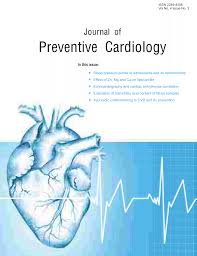A Controlled Pilot Study of Stress Management Training of Elderly Patients With Congestive Heart Failure
Categories
Keywords
Categories
Keywords
- Show all
- ADHD
- Anxiety/Panic
- Burnout
- Cancer
- Cardiovascular disease
- Chronic pain
- Cognitive function
- Cortisol/DHEA
- Costs
- Dementia
- Depressie
- Diabetes
- Global Coherence
- Hypertension
- Intuition & Consiousness
- Kids/Youth
- Leadership
- Meditation/Mindfulness
- Metabolic Syndrome
- Obesity/Eating disorder
- Pregnancy
- PTSD
- Resilience
- Schizophrenia
- Science HRV & Coherence
- Sleep quality & fatigue
- Social Coherence
- Stress
A Controlled Pilot Study of Stress Management Training of Elderly Patients With Congestive Heart Failure

The purpose of this study was to evaluate the effect of stress management training on quality of life, functional capacity, and heart rate variability in elderly patients with New York Heart Association classI–III congestive heart failure (CHF). While substantial research exists on stress management training for patients with coronary heart disease, there are few data on the value of psychosocial training on patients with CHF. Thirty-three multi ethnic patients (mean age, 66±9 years) were assigned through incomplete randomization to one of two treatment groups or a wait-listed control group. The 14 participants who completed the treatment attended eight training sessions during a 10-week period. The training consisted of 75-minute sessions adapted from theFreeze-Frame stress management program developed by the Institute of HeartMath. Subjects were assessed at baseline and again at the completion of the training. Depression, stress management, optimism, anxiety, emotional distress, and functional capacity were evaluated, as well as heart rate variability. Significant improvements (p<0.05) were noted in perceived stress, emotional distress, 6-minute walk, and depression, and positive trends were noted in each of the other psychosocial measures. The 24-hour heart rate variability showed no significant changes in autonomic tone. The authors noted that CHF patients were willing study participants and their emotional coping and functional capacity were enhanced. This program offers a simple and cost-effective way to augment medical management of CHF. Given the incompleteness of CHF medical management and the exploding interest in complementary medical intervention, it seems imperative that further work in psychosocial treatment be undertaken. (Prev Cardiol. 2002;5:168–172, 176)
Download the complete article, click here